Even before their unification in 1873, Buda, Óbuda and Pest grew intensively. In 1848, only 140,686 people lived here, but at the time of the 1869 census, the population was already 280,349, so it doubled in just over twenty years. It was obvious that the trend would continue, which is why Prime Minister Gyula Andrássy encouraged the establishment of an organization dealing with urban planning.
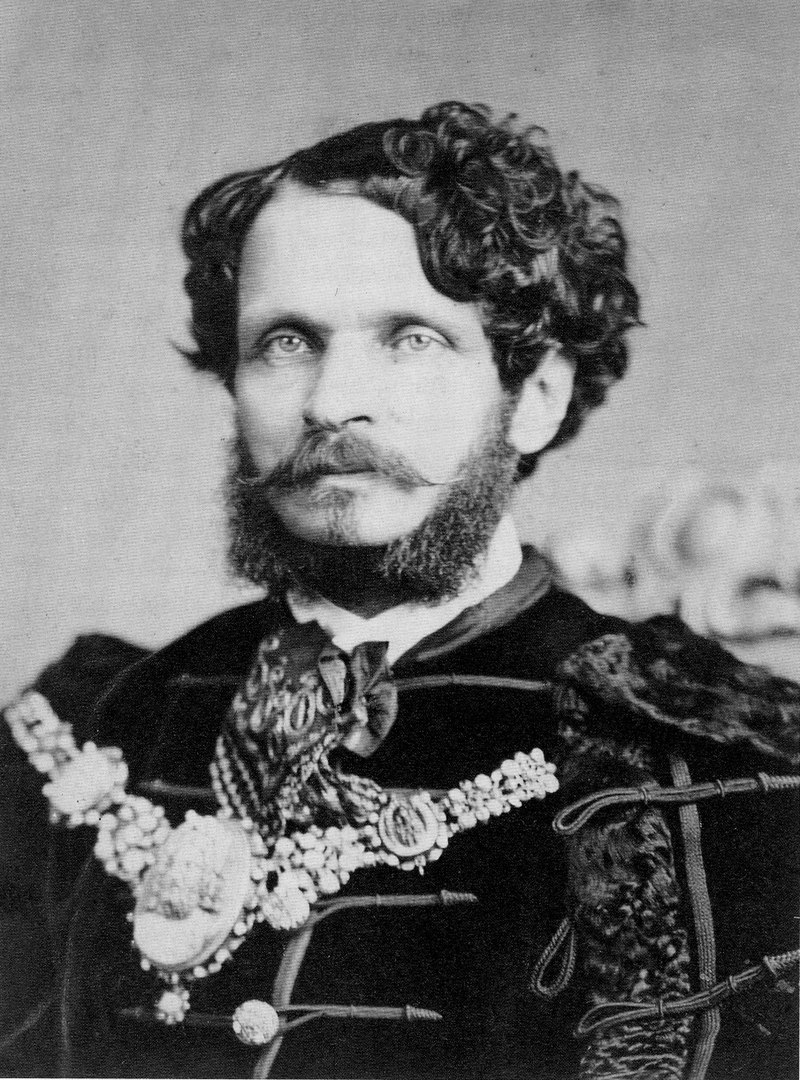
Prime Minister Gyula Andrássy initiated the creation of a board dealing with the development of the city (Source: wikipedia.org)
At his suggestion, engineer Ferenc Reitter summarized in a highly influential document in December 1869, from a technical point of view, what actions he considered necessary for the development of the city. This document actually formed the basis of the tasks of the Budapest Public Works Council (Public Works Council in short). The establishment of the organization was officially proposed by Gyula Andrássy in March 1870, when he submitted a bill to the House of Representatives. After its vote, it entered into force in the form of Article X of 1870, its exact name was "On the regulation of the Danube river near the capital and on covering the costs of other public works to be established in Buda-Pesth for the sake of traffic and transportation and on the means of execution of the public works".
According to the law, the vocation of the Public Works Council is the opening of main transport routes and the management of the Capital Fund, and in order to achieve these, they were tasked, among other things, with the implementation of major regulatory works covering the entire capital or certain city districts. Paragraph 14 gave the opportunity to order the necessary engineering records, to have the regulatory plans drawn up, and to develop tender programs to be conducted during procurement.
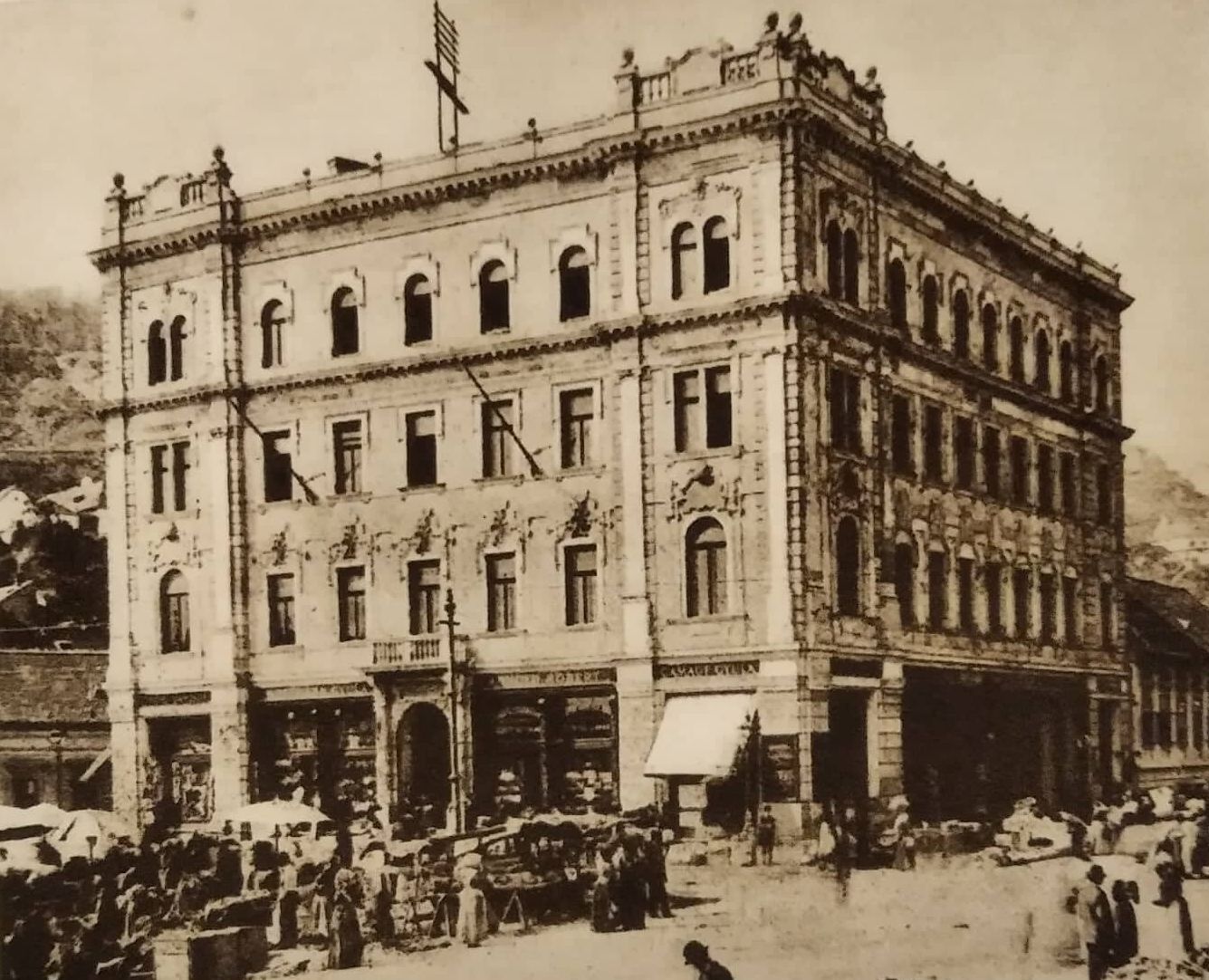
The headquarters of the Public Works Council stood on Döbrentei Square, it was demolished during the liquidation of Tabán (Source: László Siklóssy: Hogyan épült Budapest? [How was Budapest built?])
The Public Works Council took advantage of the opportunity and in March 1871 announced an international tender for the preparation of urban regulatory plans for the unified capital, whose submission deadline was 1 November of that year. The applicants were expected to solve five important tasks: 1. grouping the city districts; 2. the designation of main roads and squares; 3. the proposed placement of the public buildings specified in the program; 4. proposal for the solution of public utilities; 5. proposal for park planning. Their location had to be marked on basic maps, which interested parties could request from the Public Works Council. Perspective pictures and more detailed drawings of the public buildings also had to be attached. The participants also received a study by the Ministry of Transport on the regulation of the Danube and a ten-page document on the objectives of the program. The essence of this was summarized as follows:
"... winning a plan, through the implementation of which Buda-Pest will merge into a unified whole. Through its implementation, the capital will acquire a character appropriate to its position as the seat of the royal government and the intellectual centre of the country, and on the other hand, as the centre of industry, trade and transport, it will rise to the 27th metropolis."
Although seventy-two interested parties requested the material, only ten works were submitted by the deadline, which were publicly exhibited in the great hall of the Hungarian Academy of Sciences between 12 and 26 November 1871. The evaluation committee met on 29 November, and its members were Gyula Szapáry, State Secretary of the Ministry of Transport, Imre Steindl, architect, Ferenc Reitter, engineer, Széher Mihály, mayor of Pest, Ferenc Házmán, mayor of Buda and Géza Szapáry, Frigyes Podmaniczky, and Lajos Hofhauser from the Public Works Council. Due to the international nature, an expert from Paris and one from Hamburg were invited, and the Hungarian professional organizations also delegated members.

From left to right: the urban planning concept of the Lajos Lechner, Frigyes Feszl, and architects Klein and Fraser (Source: Gábor Preisich: Budapest városépítésének története [The History of Budapest City Planning])
The decision was made on 3 December 1871: the first prize and the accompanying twenty thousand gold francs were won by Lajos Lechner, the chief engineer of the Ministry of Public Works and Transport, with his plan titled "Veritas", the second prize of ten thousand francs went to Frigyes Feszl - the architect of Vigadó in Pest - with his design "Metropolis", and the third prize of five thousand francs was awarded to London designers Klein and Fraser. Unfortunately, most of the maps and drawings have been lost, only a part of the works of the English applicants has survived. But starting from the textual descriptions, we can create an image of the ideas of Lechner and Feszl, and they were later reconstructed in the literature.
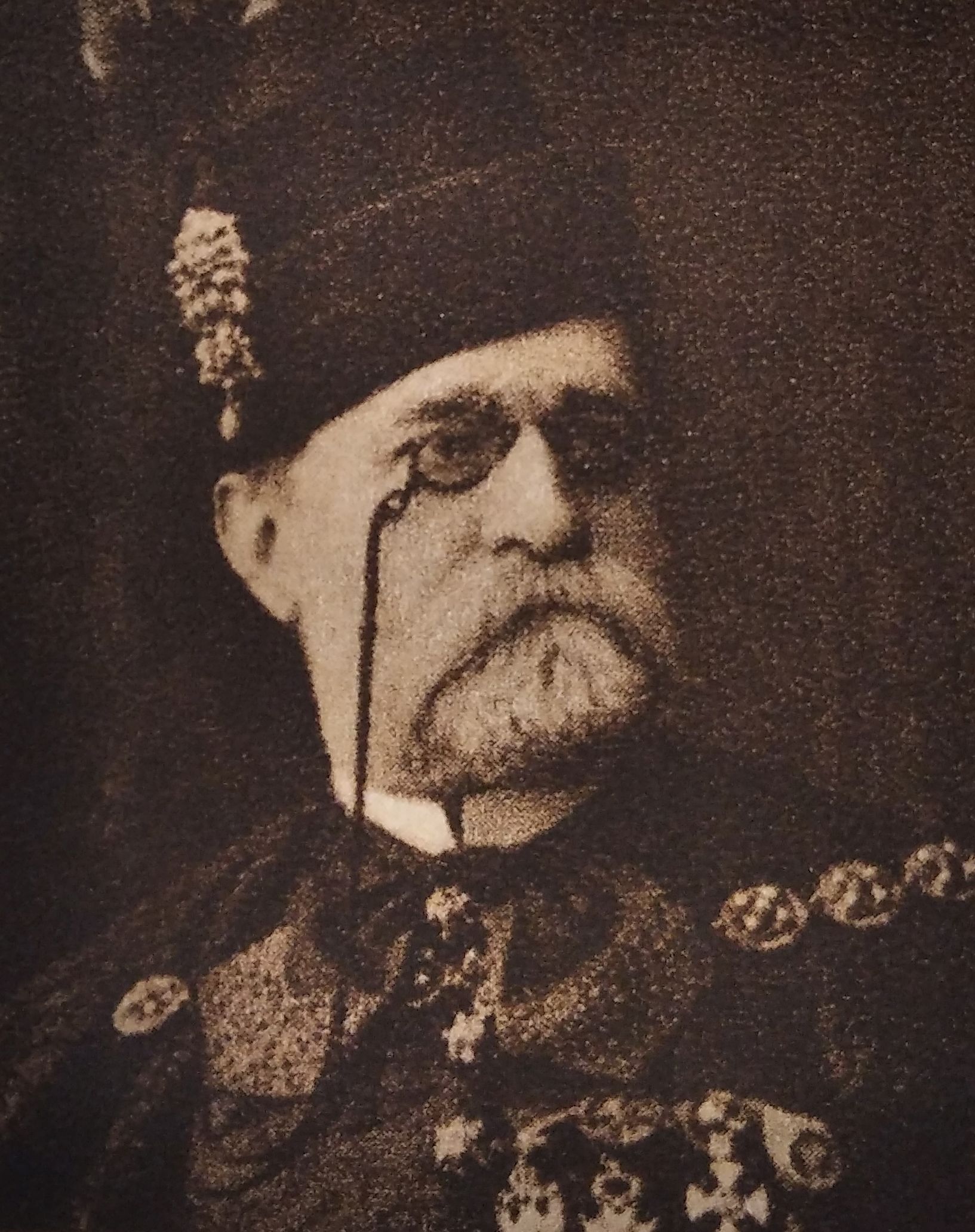
Engineer Lajos Lechner, winner of the design competition (Source: László Siklóssy: Hogyan épült Budapest? [How was Budapest built?])
According to Lajos Lechner, the capital can become unified if its two parts are in harmony with each other. Therefore, he would have placed more emphasis on the development of Buda: he improved the accessibility of the Castle by constructing the roads leading there and demolishing the gates. He would have developed Lipótváros in Pest, primarily by demolishing the Újépület [New Building] and building its place. By the way, he was a supporter of the boulevard-avenue structure, but he would not have substantially modified the boulevards that already existed at the time, he would have only widened Stácíó Road (now Baross Street).
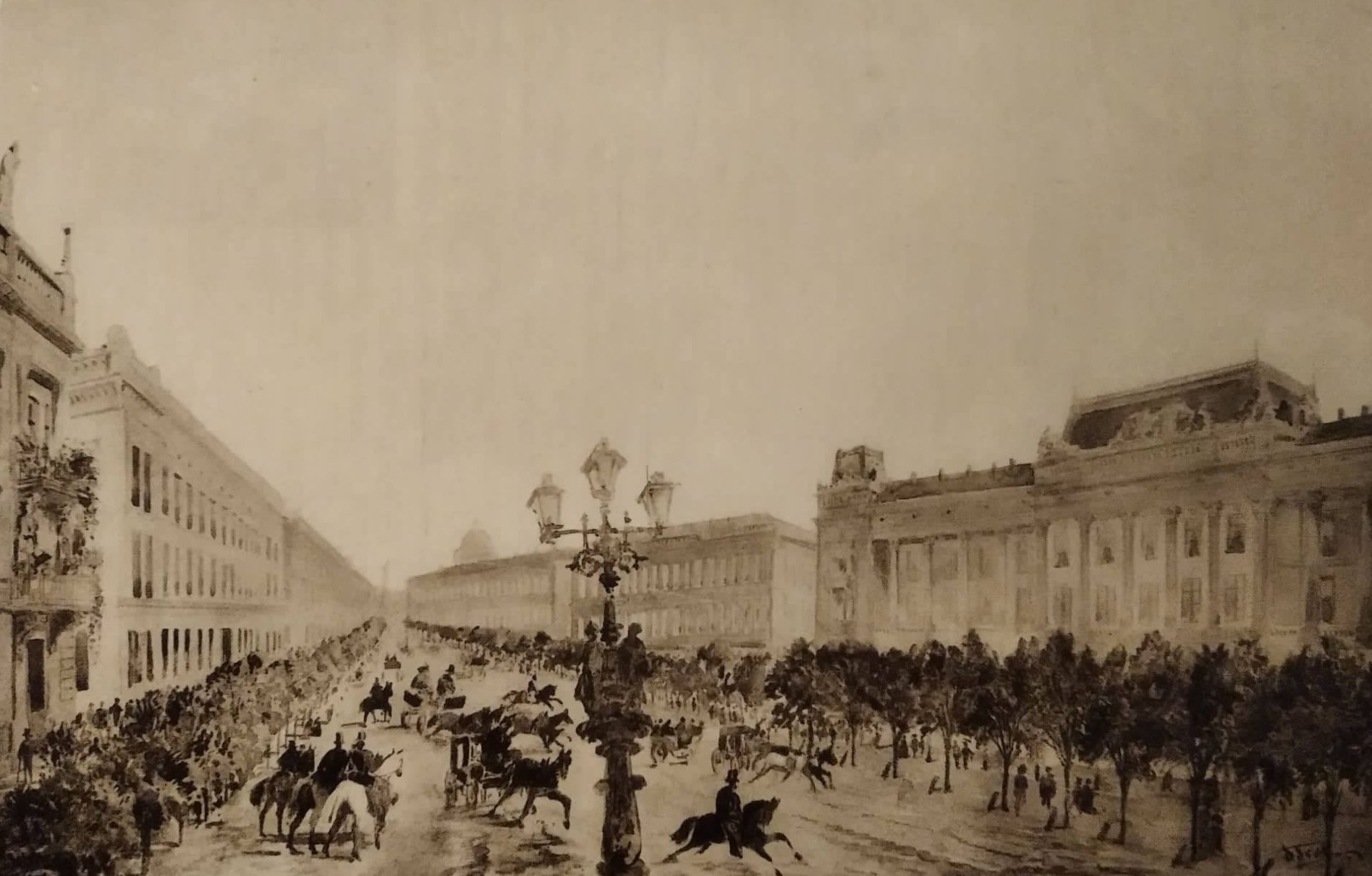
Frigyes Feszl's perspective view of Sugárút [Avenue] (Source: László Siklóssy: Hogyan épült Budapest? [How was Budapest built?])
Frigyes Feszl also approved the boulevard-avenue system proposed by the Public Works Council, and he would have used it even more spectacularly: he planned a sweeping main road from Üllői Road through Kecskemét and Dorottya Streets to Ferenc József (today István Széchenyi) Square, which would have passed through the Chain Bridge and the Tunnel to an inner boulevard in Buda. The regulation of the historic Inner City had already appeared in his imagination - among other things, the demolition of the old town hall - which became a reality more than twenty years later. In Buda he formulated forward-looking ideas about Tabán, which he would have completely renovated and populated with newly built apartment buildings and villas.
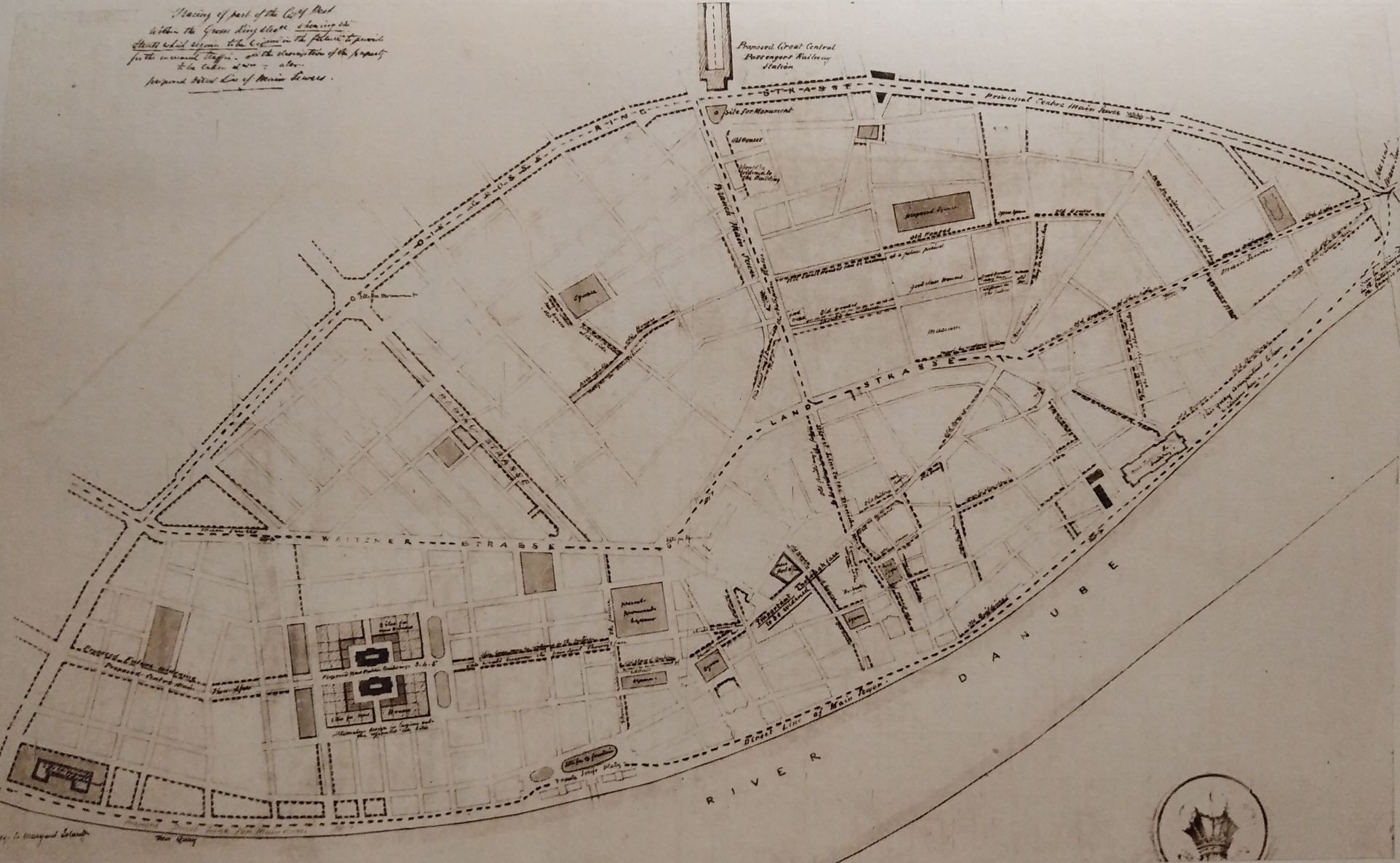
The third-prize course plan of English architects Klein and Fraser (Source: László Siklóssy: Hogyan épült Budapest? [How was Budapest built?])
Klein and Fraser's plan - which has fortunately been preserved for posterity - also shows a through main road that starts from Üllői Road and passes through Inner City, but leaves it to the north and forms the axis of the plot of the demolished Újépület before it flows into Outer Ring Road. The second- and third-prize projects were therefore the most daring, but that is precisely why the Public Works Council did not choose them as winners. On the Pest side, the construction of Sugárút had already begun, which faced many difficulties - if the brave won, it should have been continued at all costs. However, several decision-makers were unsure about the raison d'être of the huge investment.
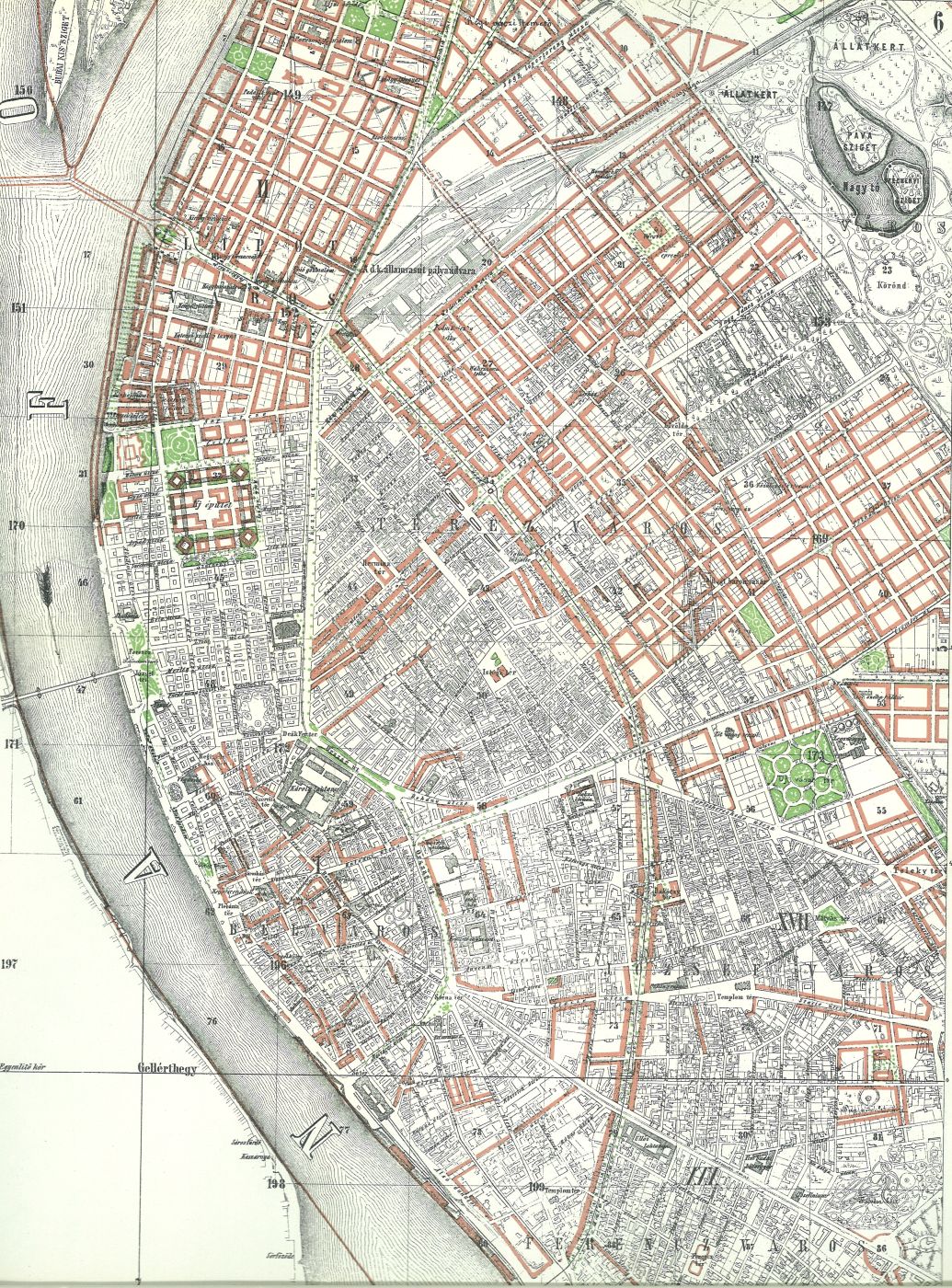
Pest's urban planning plan of 1872 (Source: László Siklóssy: Hogyan épült Budapest? [How was Budapest built?])
Nevertheless, the jury did not regard Lajos Lechner's idea as fully worthy of execution, in its evaluation it stated that the tender resulted in the fact that it gave the Technical Department of the Capital a number of ideas for the final arrangement plan. This was done for the Pest side in 1872, the Buda side in 1876, and for Óbuda in 1878. However, the realization still took many decades: the new Boulevard leading to the Városliget - today's Andrássy Avenue - was fully built by 1885, and the Outer Ring Road was not handed over until the millennium of 1896, but even then some lots were empty. Although the applicants also made proposals for public buildings, a separate competition was finally announced for most of them, for the Parliament in 1881, and for the Szabadság Square palaces only at the turn of the century.
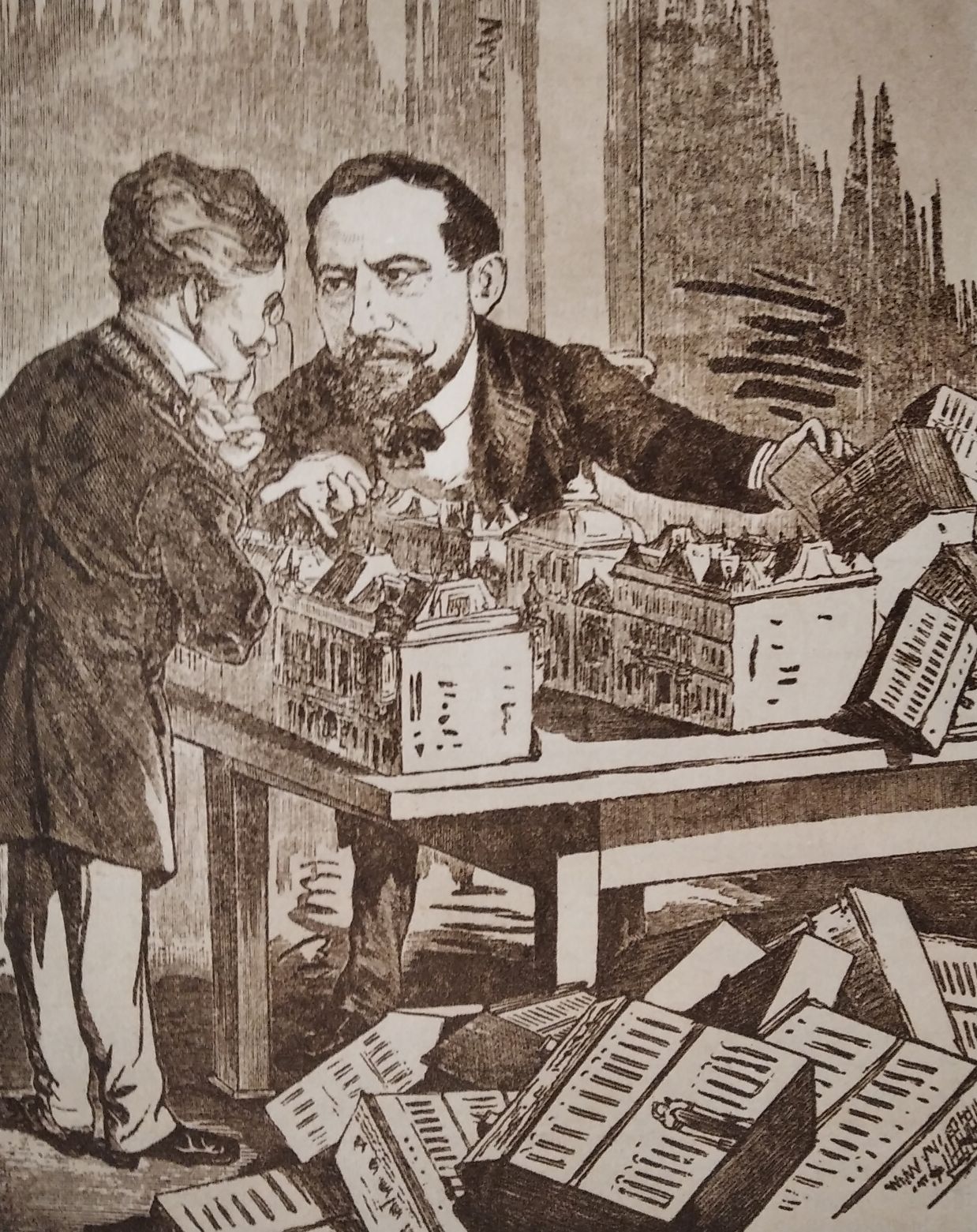
Meeting between Transport Minister Lajos Tisza and State Secretary Gyula Szapáry about Sugárút (Source: Üstökös, No. 27, 1871)
By the way, the press also followed the competition with special attention, which is also reflected in the caricatures: János Jankó caricatured several drawings for Borsszem Jankó and Üstökös. The Public Works Council itself was sometimes in the crosshairs, which had a serious background: many people were dissatisfied with it. The criticism was mainly for the fact that it dealt almost exclusively with the construction of Sugárút, and did not sufficiently regulate the works even at the Outer Ring Road. After the First World War, its weight also decreased - it usually only approved the layout plans prepared by the Engineering Office of the Capital - and then it was completely abolished in 1948.
Cover photo: The lower wharf in Pest seen from the Chain Bridge between 1880 and 1890 (Source: Fortepan/Budapest Archives, Reference No.: XV.19.d.1.06.015

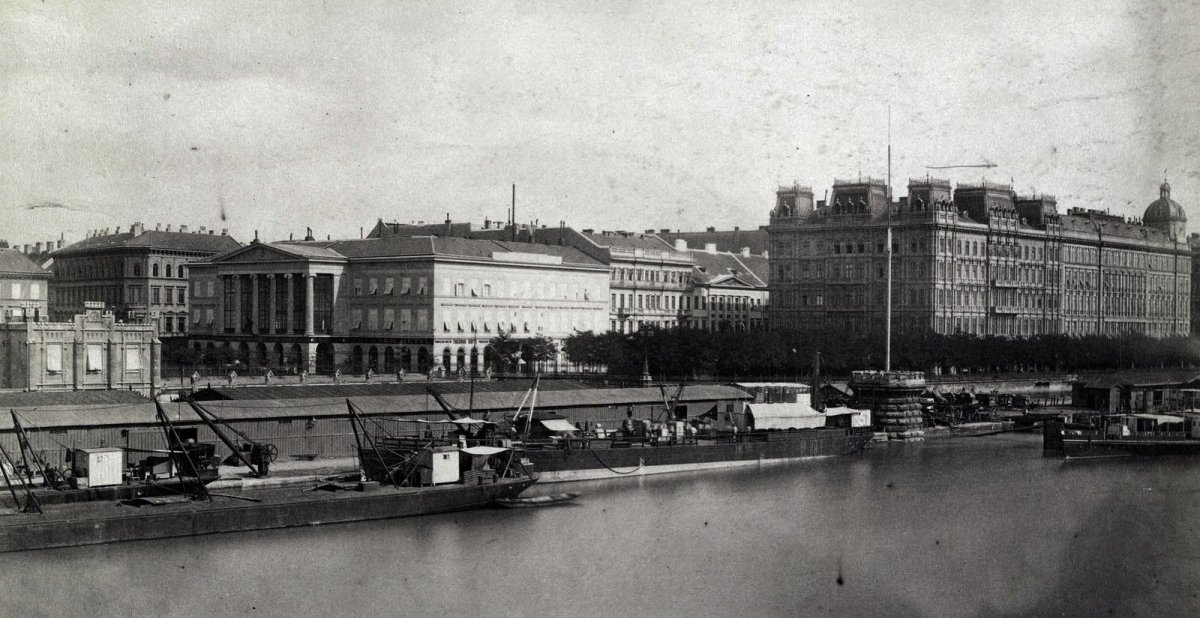


































Hozzászólások
Log in or register to comment!
Login Registration